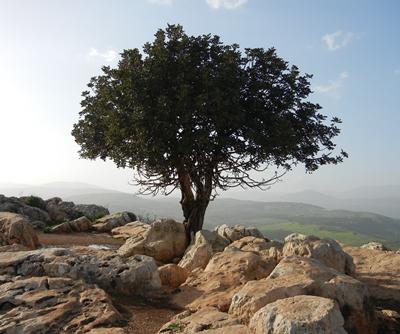Scientists explain increasing lushness in drylands as global temperatures climb

New research has revealed how plants have adapted to global warming to thrive in the drylands of the world.
Global drylands are warming at a faster than average rate compared to other regions of the planet and are amongst the places most vulnerable to climate change. Meteorological metrics all point to increasing surface aridity, raising concerns of more land degrading or turning to desert. However, in contradiction to the image this portrays, recent satellite observations have also shown lusher, greener drylands.
In this new study, an international team, which included the University of Southampton, examined global dryland aridity changes with evidence from a comprehensive range of literature, Earth observations and numerical modeling.
The findings, published in Nature Reviews Earth & Environment, showed that atmospheric-based metrics suggest a strong trend of rising dryness. Soil moisture and runoff also imply increasing aridity in the drylands but at a slower pace. By contrast, ecosystem-based metrics show a trend of greening and reduced plant water stress, despite the rising atmospheric dryness. Simulations of vegetation dynamics also confirm the co-occurrence of atmospheric drying and ecosystem greening over drylands.
Xu Lian from Peking University and lead author of this study explained: “Literally, aridity means insufficient water supply to meet the demand. However, for different parts of the land surface, their supply and demand sides are different; and they can move toward divergent directions under environmental changes. Therefore, when different dryness metrics are brought together in a unified framework, they can have very differing trends. No single metric fully captures the complex nature of the land surface aridity”.
The researchers have been able to explain the paradox through the fact that the pores of plants’ leaves (stomata), which usually allow for water loss, partially close under higher CO2 concentrations. This means the plants can conserve their water during increasing aridity and capture extra CO2, triggering more vigorous growth. This in turn affects other natural processes on the land surface, leaving more water in soils, which runs off into rivers and at the same time also making the air near the surface warmer and drier.
Justin Sheffield, Professor of Hydrology and Remote Sensing at the University of Southampton, who was part of the project team, added: “The impacts of climate change on drylands are often perceived to be one way, with changes in the atmosphere driving changes in vegetation. This research reveals the complexity of the two way interactions between the land and the atmosphere, and the key role that plant physiology plays in adapting to drier conditions.”
The authors note that future changes to drylands may follow different patterns, due to additional drivers such as flash droughts, fire disturbances and human activities, which are not yet fully understood. “Understanding possible nonlinear behaviors and tipping points of dryland ecosystem changes, and improve their representation in Earth system models, is a high priority for future research”, Lian added.
In the future, rapidly growing populations and socio-economic development may increase human water demand dramatically, which will become the key driving force of dryland aridity changes and compete with ecosystems for water, posing growing threat to ecosystem health.
“Dryland water-resource management and climate-change mitigation policies should consider how to manage water in more efficient and sustainable ways, to safeguard food security while simultaneously maintain healthy ecosystems”, said Bojie Fu of the Chinese Academy of Sciences, who leads the Global Dryland Ecosystem Programme (Global-DEP).
Full paper reference: Lian, X. et al. Multifaceted characteristics of dryland aridity changes in a warming world. Nature Reviews Earth & Environment (2021). doi: 10.1038/s43017-021-00144-0.